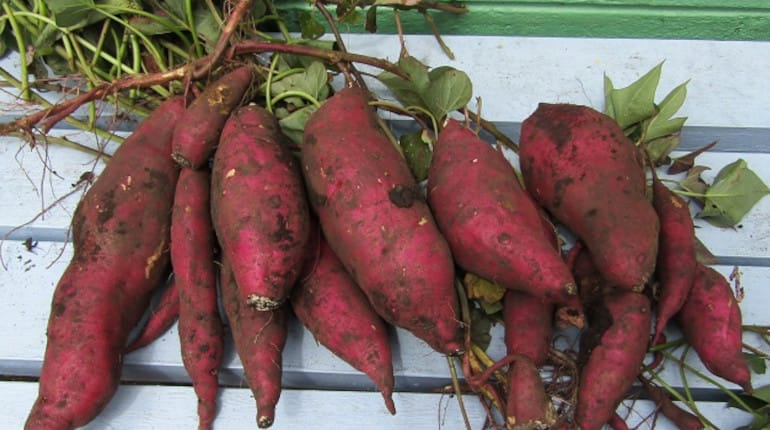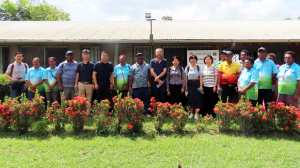By Winnie Maso
Sweetpotato is the main food crop grown in the Highlands provinces. Like other food crops, it is affected by diseases which can reduce the yield of the crop. Sweetpotato virus disease (SPVD) is the main concern as it is commonly found affecting sweetpotato production throughout the highlands provinces.
The virus is spread by small insects (aphids and whiteflies), feeding on the sweetpotato leaves, and also when planting material is used from affected crops. It is recommended to use virus free planting materials from a recognised “pathogen tested” source to prevent spread of sweetpotato viruses and increase yields in sweetpotato production. Pathogen Tested is often simply referred to as “PT”.
Sweetpotato pathogen testing technology was introduced in 2005 when a collaborative research project began involving NARI, FPDA and the Queensland Department of Agriculture and Fisheries, and supported by the Australian Centre for International Agricultural Research. Through many years of collaborative research and development, a sweetpotato PT system for virus-free planting material has been developed. This has improved access to productive, virus-free planting materials for sweetpotato producers in the main highland provinces in PNG.
The continuous production of virus-free certified sweetpotato planting material stock is a key service which NARI provides in the PT sweetpotato system. This process takes approximately eighteen months. The first step is to receive samples of vines or roots of a selected variety from clients and immediately plant them inside an insect-proof screen house. When these samples are three months old, they undergo a virus screening process over the next two months. It is also at this time that shoots from these samples are taken into the tissue culture laboratory and prepared for virus removal.
The tissue culture material is kept free from external contamination and takes another three months to grow into very small plants which are then placed inside a special “therapy” chamber to grow under a heating program. They stay in this chamber for a period of six weeks to remove any virus. After this, the cells that are growing at the very top of each small plant are extracted under a microscope and placed on nutrient media for further cell division and development. These extracted cells, called “meristems”, are very small, between 0.3 to 0.5 mm in size. Meristems grow in tissue culture conditions for three months. Fully developed plantlets which survive the heat therapy are taken from the laboratory and raised inside insect-proof screen houses for three months before a second check for presence of virus. Once completed, the virus-free plantlets are “certified” and further propagated inside insect-proof screen houses for clients.
Ten PT sweetpotato varieties are currently maintained at NARI’s Highlands Regional Centre at Aiyura, and are available for supply sweetpotato growers throughout PNG. Of the ten varieties; Wanmun, Gimane, Whagi Besta, Whagi Besta Minj2, Korowest, Maraso and Rachel grow well in cool conditions while Northern Star and Beauregard varieties favour warmer conditions. NARI continues to produce virus-free planting materials of locally selected sweetpotato varieties with commercial potential. Sweetpotato virus management is backed with diagnostic methods to ensure planting materials are virus-free and available for PNG’s sweetpotato growers.






